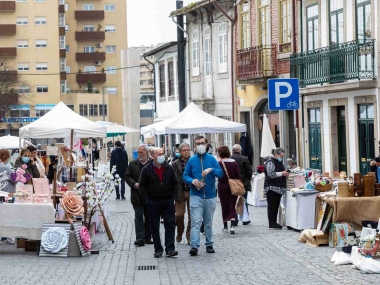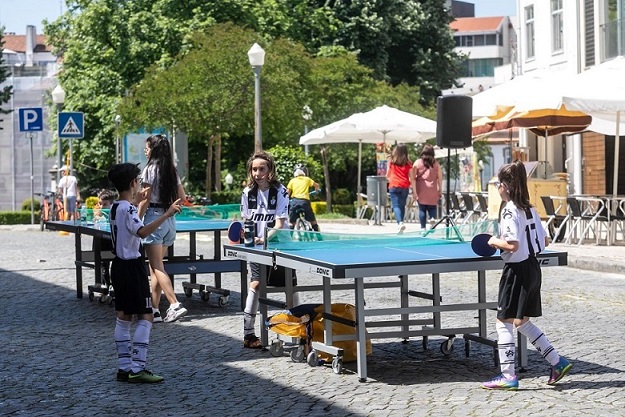Experimenting with Open Streets in Santo Tirso
Edited on
18 August 2022By Ana Poças, consultant for the Municipality of Santo Tirso
A key challenge when participating in an URBACT network is organizing a Small Scale Action (SSA). An SSA is the opportunity to try out some initiative, concept, or policy measure. The idea is that the SSA should be decided between the municipality and local stakeholders (the Urbact Local Group). In this post we describe the process of implementing our SSA in Santo Tirso, from idea to action and evaluation.

When we first started to engage with the local group, both external actors and members of different divisions of the municipality, we asked them about what they saw as the main problems in the centre of Santo Tirso, and what could be possible solutions. One problem identified was the car-dominance. Many people use the car, even if the centre is compact and walkable. In fact, car-dependency has been getting worse in Portugal, and in Santo Tirso as well. Between 2001 and 2017, the share of car trips went up from 44,5% to 76,4% in the municipality.
In the brainstorming sessions, one idea came up again and again, suggested independently by different people: experimenting with closing the main street from time to time, together with different activities to bring people to the centre. Later, when we participated in the online Transnational Meeting in Nova Gorica, in April 2021, someone presented an Open Streets event in the Slovenian town of Škofja Loka. Their engaging video (https://www.youtube.com/watch?v=ohLkh-XDNFo ) showed how it is possible to create a lively community event in what is usually a hostile car-dominated street. When it was time to discuss ideas for the SSA with stakeholders, we showed them that video. The response was unanimous, immediately there was a shared motivation and plenty of suggestions of activities to organize the SSA. The title came up shortly afterwards: Viva a Rua, as in “Live the street!”, and it was decided to try it out three times: one Saturday in late March, late May, and late July. The last edition was cancelled due to difficulties with the extreme summer heat, which was already felt in the second edition.

Multiple external actors were involved, preparing and leading activities on the day. Several divisions of the municipality were also very active, organizing the market stands, the “try an e-bike” activity, the environmental education activities, among others, and coordinating the whole event.
On those two Saturdays, the main axis of the city was open exclusively to people on foot or bikes between 10am and 6pm. We organised events that could attract people to the city centre and communicated the event as an experience of the area as a pedestrian zone.

The organisation of the SSA has shown us that there is strong willingness from other departments to collaborate, and also from external partners. The programme included dance performances from CAID (Cooperative for the Support and Integration of People with Disabilities), from the local Gymnastics Association, an urban street market, traditional games set up by the Scouts group, a theatre play, the possibility to try out e-bikes from the City’s shared e-bike system, an art exhibition, spinning classes organised by local fitness clubs, among other activities. In terms of resources, the main cost was the time for organising and coordinating with all the activity promoters, as all activities were organised free of charge.
The public at large was very positive about the event: between 60 and 65% of people have evaluated the event with a 5 (on a 1 to 5 scale), and more than 80% would like Viva a Rua to happen regularly, either monthly or weekly. However, a major drawback was the effect on local businesses whose shops were on the open streets. A survey conducted by the local business association estimated that 60% of businesses experienced a drop in sales on those days. About 5% experienced higher sales, and for 25% there was no impact. In the second edition of Viva a Rua, the local business association organized a sales campaign in local shops. Shopkeepers were invited to use the sidewalks to put up stands, giving more visibility to their products, but few businesses participated in the sales campaign, and even fewer took advantage of using the street.
However, there was the interesting case of a shoe store. The owner was one of the most critical voices in the first edition, experiencing a sharp drop in sales. But in the second edition she participated in the sales campaign, and used social media to let her customers know about it. She also used the opportunity to display products outside in a stand. At the end of the second edition, she was satisfied with the amount of sales. This indicates that if business owners take proactive measures, they can have a good return on open street events.

Submitted by Francesca Blamonti on
